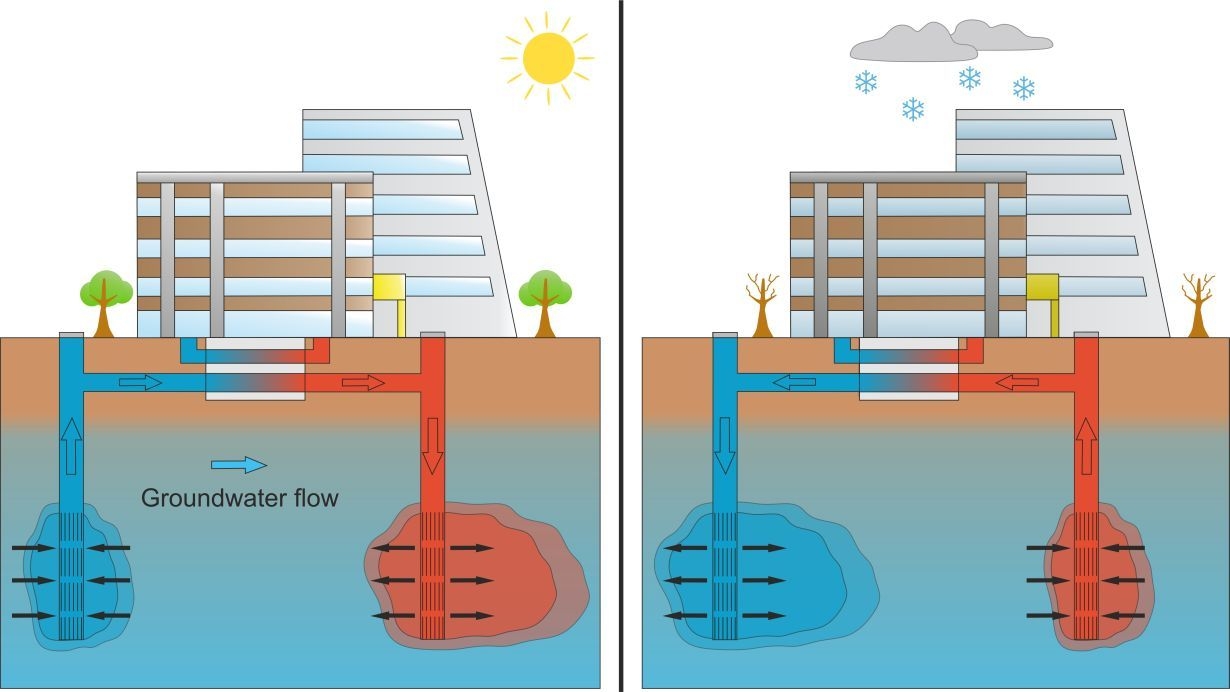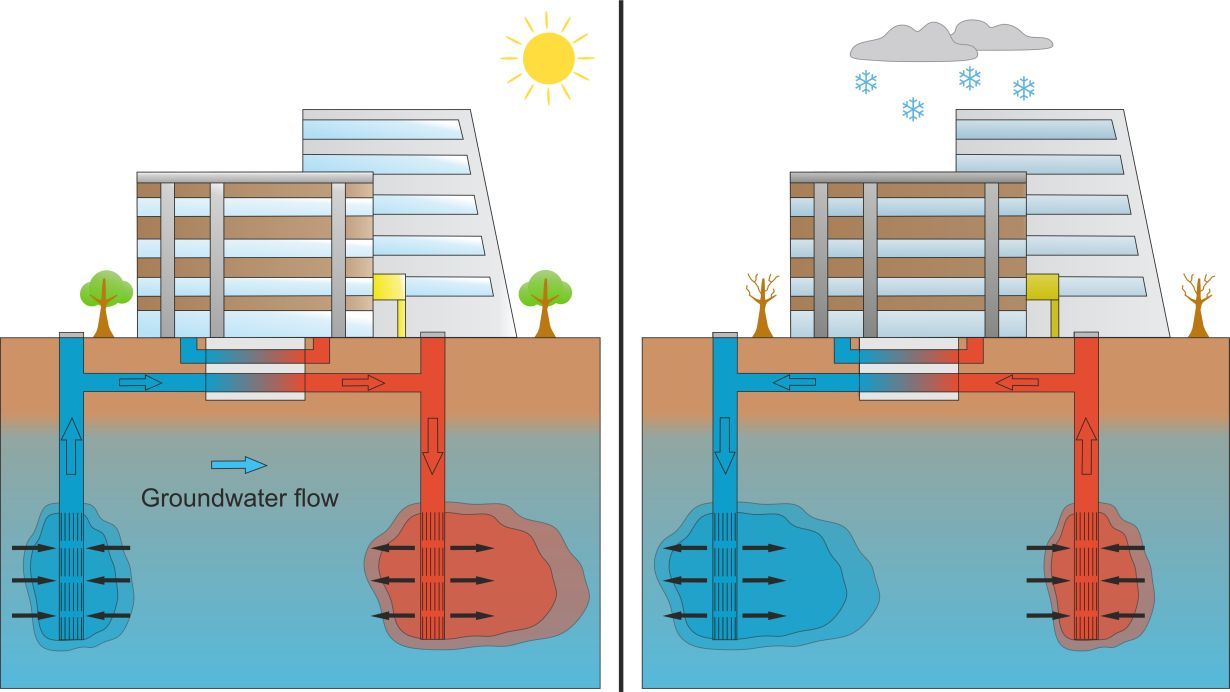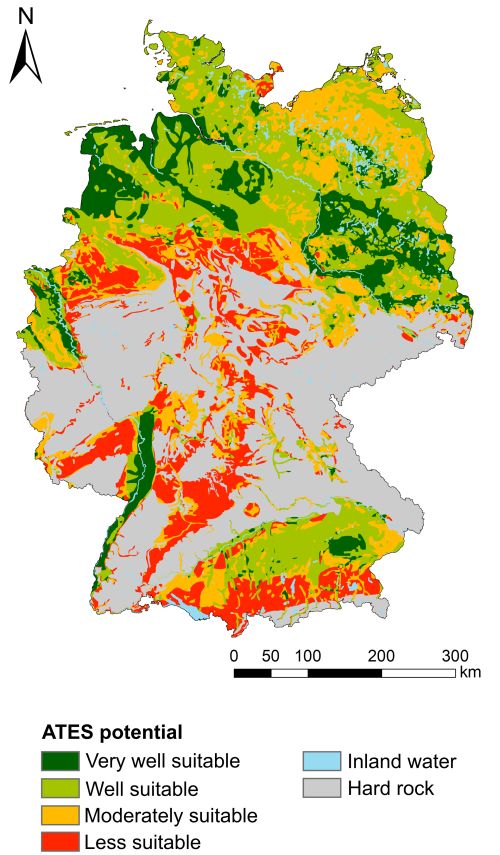We reach more than 65,000 registered users in Dec!! Register Now

Great Potential for Aquifer Thermal Energy Storage Systems
- November 28, 2022
- 65 Views
- 0 Likes
- 0 Comment
Aquifer thermal energy storage systems can largely contribute to climate-friendly heating and cooling of buildings: Heated water is stored in the underground and pumped up, if needed. Researchers of Karlsruhe Institute of Technology (KIT) have now found that low-temperature aquifer thermal energy storage is of great potential in Germany. This potential is expected to grow in future due to climate change. The study includes the so far most detailed map of potential aquifer storage systems in Germany. The results are reported in Geothermal Energy. (DOI: 10.1186/s40517-022-00234-2)Low-temperature Aquifer Thermal Energy Storage Systems Enable Climate-friendly Heating and Cooling – KIT Study Reveals Potential for Germany
 Ruben Stemmle, AGW/KIT
Ruben Stemmle, AGW/KITMore than 30 percent of domestic energy consumption currently consumed in Germany is used for heating and cooling buildings. Decarbonization of this sector could therefore lead to major greenhouse gas emission reductions and largely contribute to climate protection. Aquifer thermal energy storage systems, i.e. water-bearing layers in the underground, are suited well for the seasonal storage and flexible use of heat and cold. Water has a high capacity of storing thermal energy. The surrounding rocks have an insulating effect. Underground aquifer thermal energy storage systems are accessed by boreholes and used to store heat from solarthermal plants or waste heat from industrial facilities. If required, the heat can be pumped up again. Such storage systems can be combined perfectly with heat networks and heat pumps. Near-surface low-temperature aquifer thermal energy storage systems (LT-ATES) have proved to be particularly efficient. As the water temperature is not much higher than the temperature of the environment, little heat is lost during storage.
More than Half of the German Territory Is Suited Well or Very Well
Researchers from KIT’s Institute of Applied Geosciences (AGW) and the Sustainable Geoenergy Junior Research Group have now identified the regions suited for low-temperature aquifer thermal energy storage in Germany. “Criteria for an efficient LT-ATES operation include favorable hydrogeological conditions, such as the productivity of groundwater resources and groundwater flow velocity,” Ruben Stemmle explains. The member of AGW’s Engineering Geology Group and first author of the study adds: “Moreover, energy consumption for heating and cooling must be balanced. It can be approximated by the ratio of heating and cooling degree days.”
Researchers have combined hydrogeological and climate criteria in a spatial analysis. They found that 54 percent of the German territory will be suited very well or well for LT-ATES in the upcoming decades. These potentials are largely concentrating on the North German Basin, the Upper Rhine Graben, and the South German Molasse Basin. The corresponding map was generated by the researchers with the help of a geoinformation system (GIS) and a multi-criteria decision analysis.
 Ruben Stemmle, AGW/KIT
Ruben Stemmle, AGW/KITAccording to the study, the areas suited well or very well for LT-ATES will presumably increase by 13 percent for the period from 2071 to 2100. The large increase of very well-suited regions is attributed to an increasing cooling demand in the future, i.e. it will be due to climate change. However, use of aquifer storage systems is largely restricted in water protection zones, which will reduce the very well or well-suited areas by around eleven percent. “Still, our study reveals that Germany has a high potential for seasonal heat and cold storage in aquifers,” Stemmle says. (or)
Original Publication (Open Access)
Ruben Stemmle, Vanessa Hammer, Philipp Blum and Kathrin Menberg: Potential of low‑temperature aquifer thermal energy storage (LT‑ATES) in Germany. Geothermal Energy, 2022. DOI: 10.1186/s40517-022-00234-2
https://geothermal-energy-journal.springeropen.com/articles/10.1186/s40517-022-00234-2
More about the KIT Energy Center: https://www.energie.kit.edu
Being “The Research University in the Helmholtz Association”, KIT creates and imparts knowledge for the society and the environment. It is the objective to make significant contributions to the global challenges in the fields of energy, mobility, and information. For this, about 9,800 employees cooperate in a broad range of disciplines in natural sciences, engineering sciences, economics, and the humanities and social sciences. KIT prepares its 22,300 students for responsible tasks in society, industry, and science by offering research-based study programs. Innovation efforts at KIT build a bridge between important scientific findings and their application for the benefit of society, economic prosperity, and the preservation of our natural basis of life. KIT is one of the German universities of excellence.
List of Referenes
- Ruben Stemmle, Vanessa Hammer, Philipp Blum, Kathrin Menberg. Potential of low-temperature aquifer thermal energy storage (LT-ATES) in Germany. Geothermal Energy, 2022; 10 (1) DOI: 10.1186/s40517-022-00234-2
Cite This Article as
No tags found for this post









